Median Section of the Human Head
1/32
There's no tags or description
Looks like no tags are added yet.
Name | Mastery | Learn | Test | Matching | Spaced |
|---|
No study sessions yet.
33 Terms
Bone of Skull
A
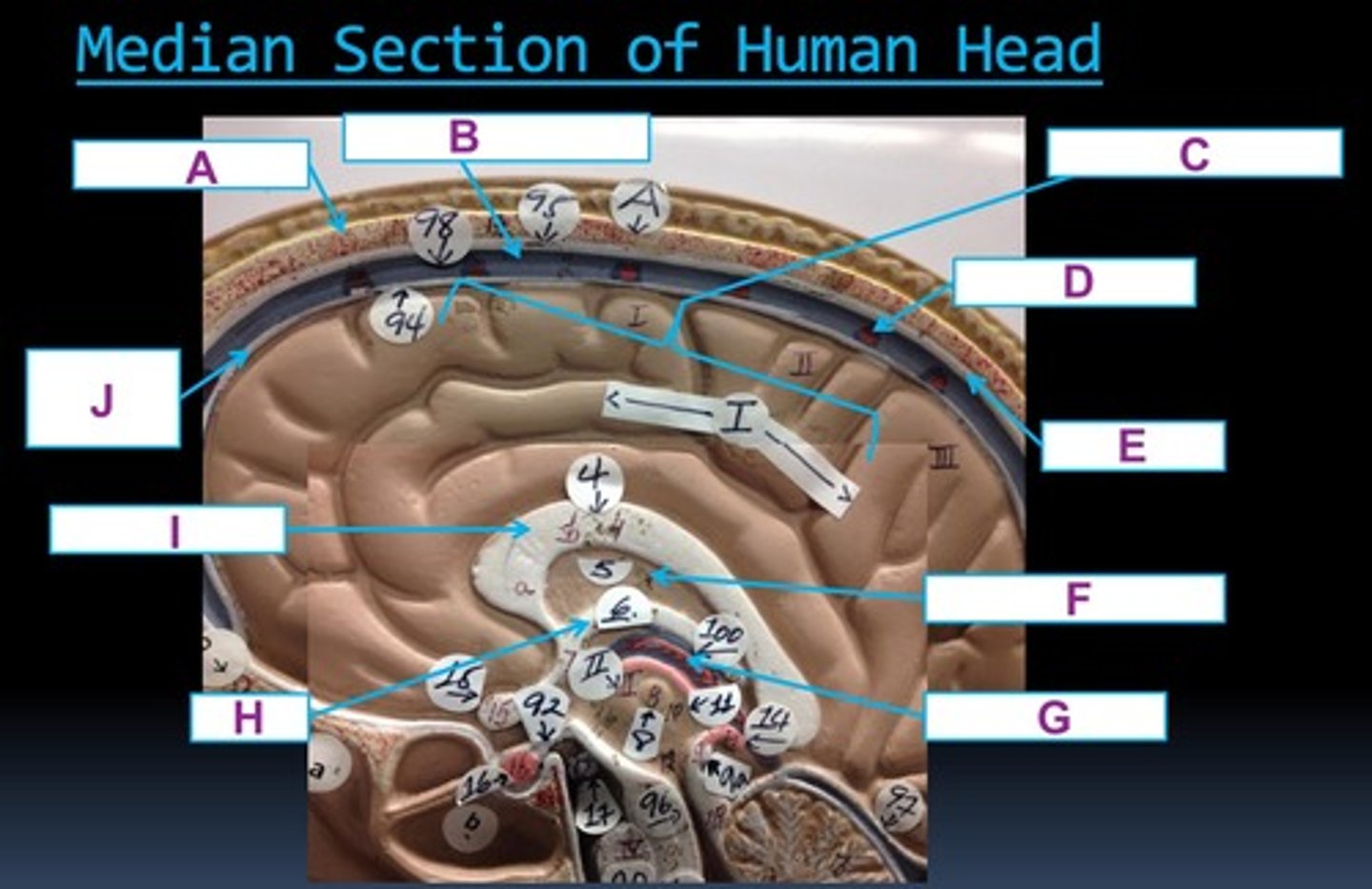
Superior Sagittal Sinus
B

Cerebral Hemisphere: processes higher brain functions
C

Arachnoid Villus
D

Dura Mater: outermost meninge, protects spinal cord
E
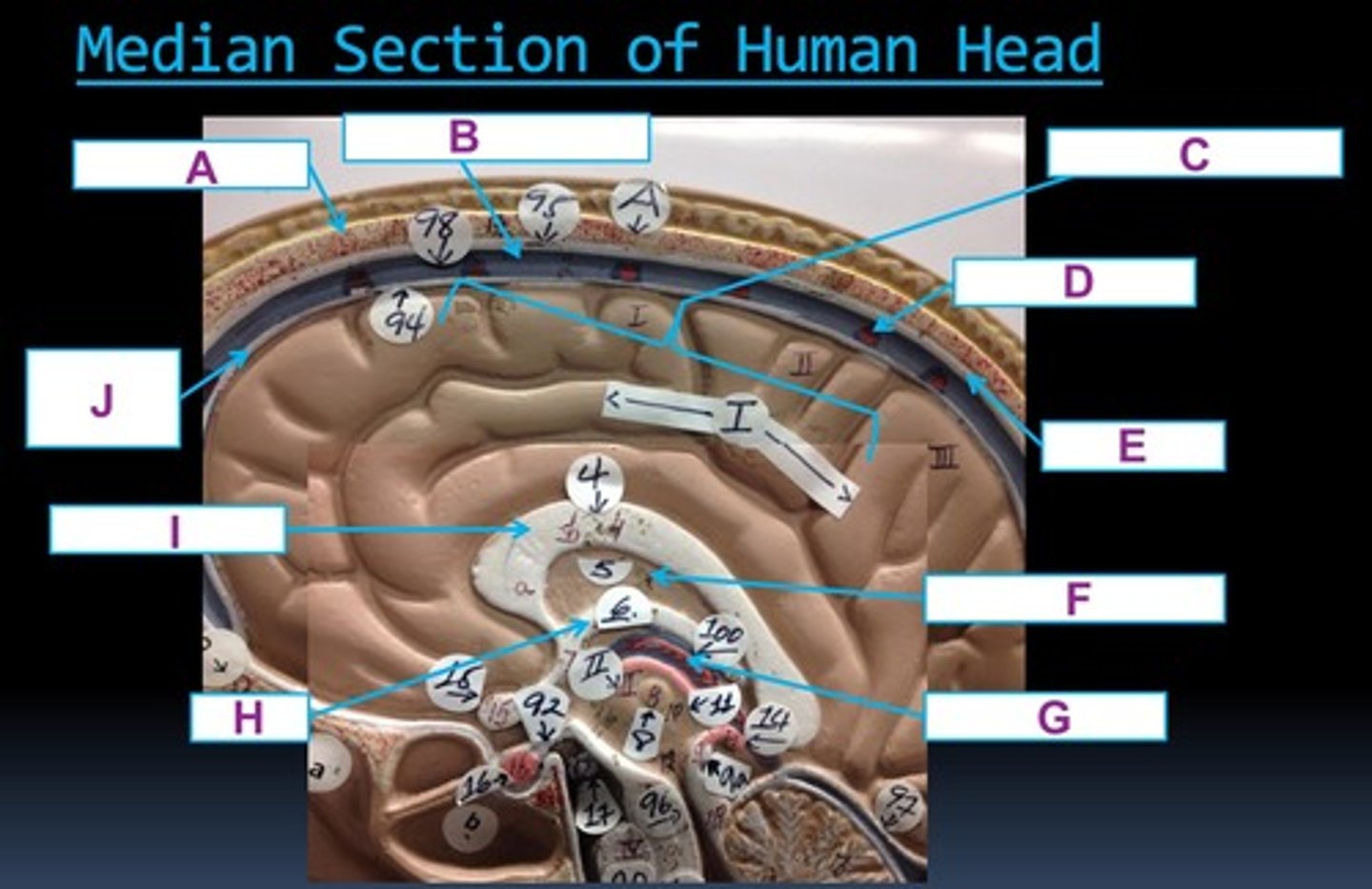
Septum Pellucidum: separates the lateral ventricles
F
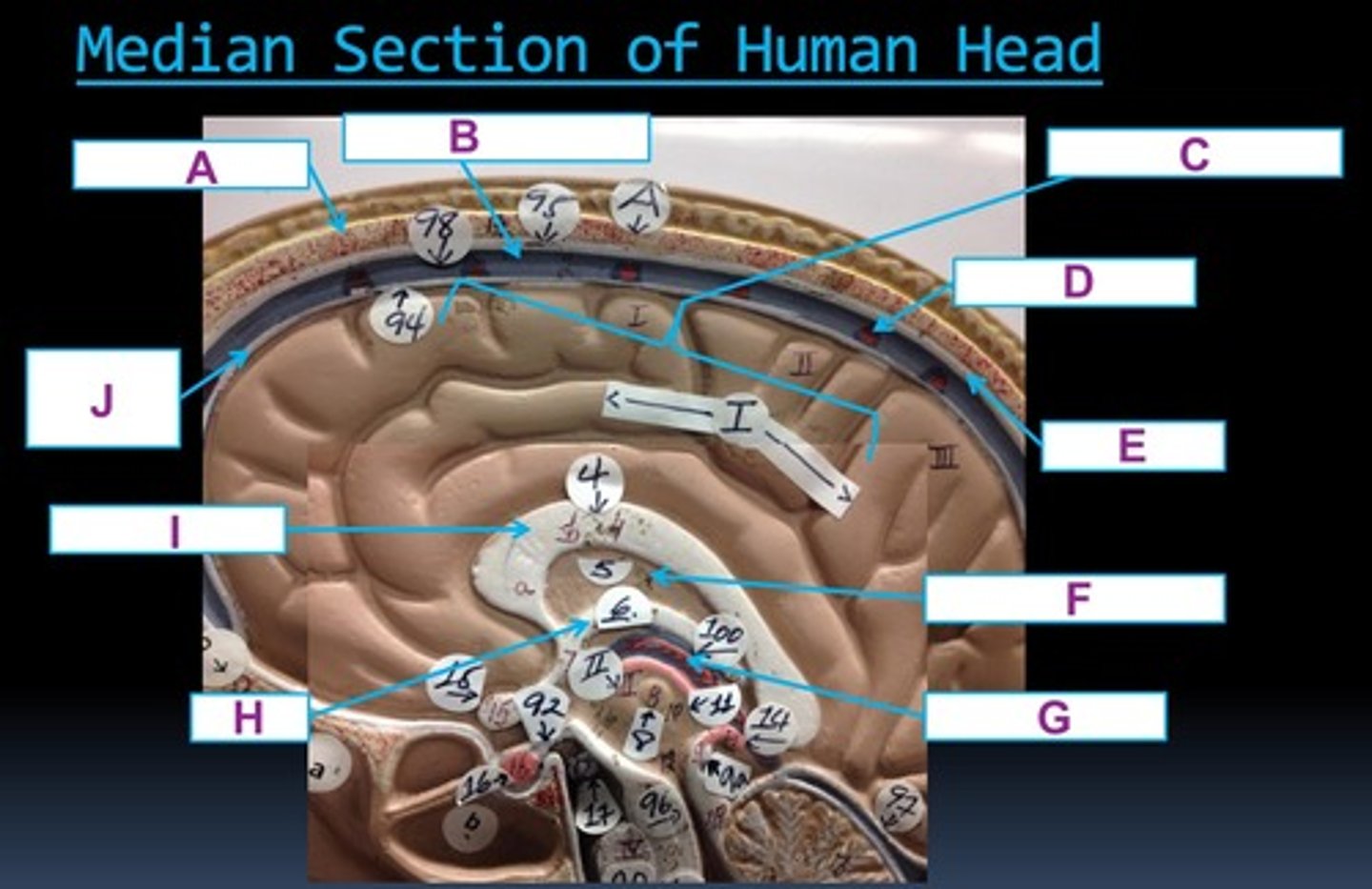
Choroid Plexus: makes cerebrospinal fluid
G

Fornix: concerned with olfaction
H

Corpus Callosum: connects cerebral hemispheres
I
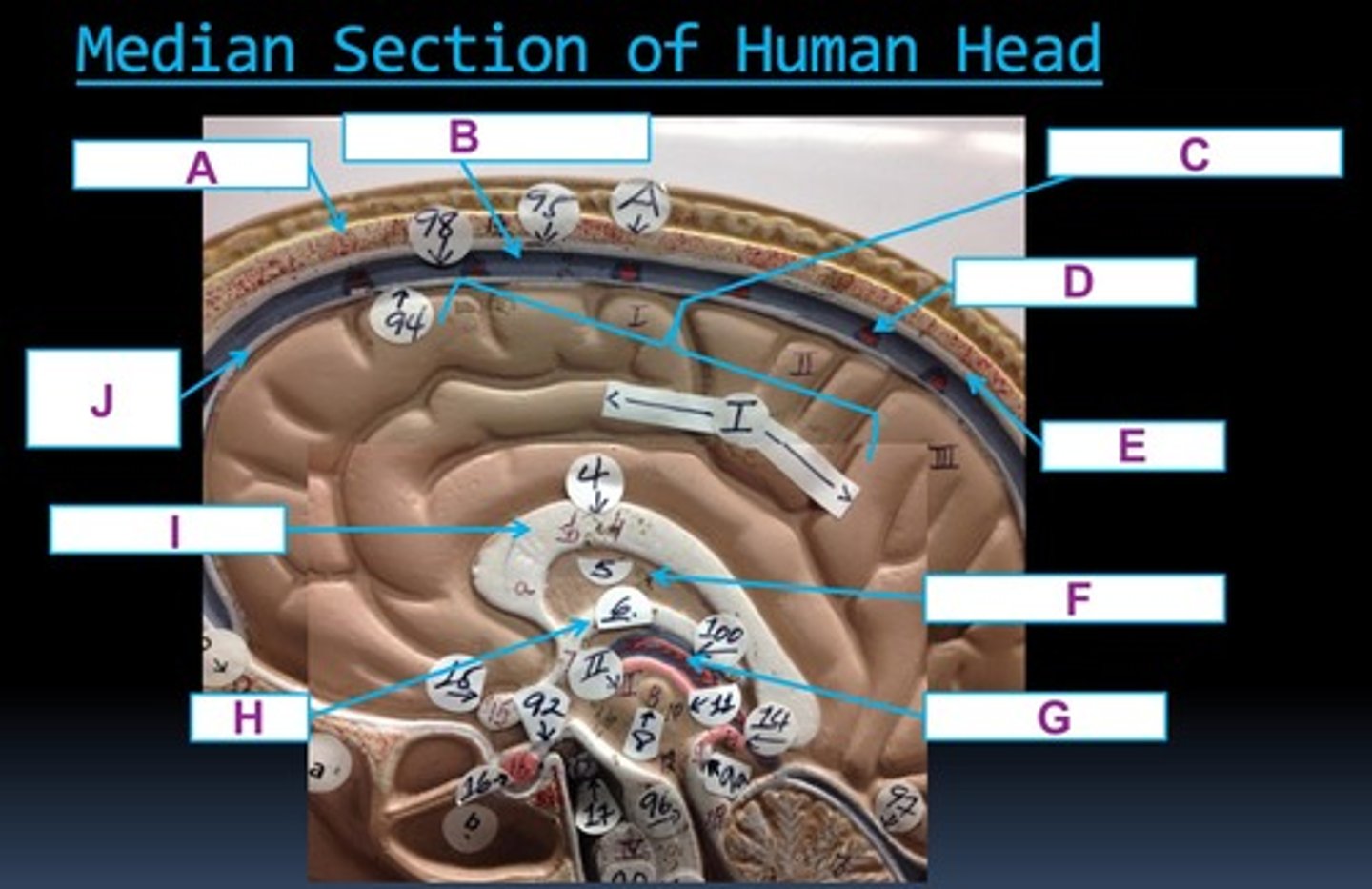
Arachnoid Mater: middle meninge, protects spinal cord
J
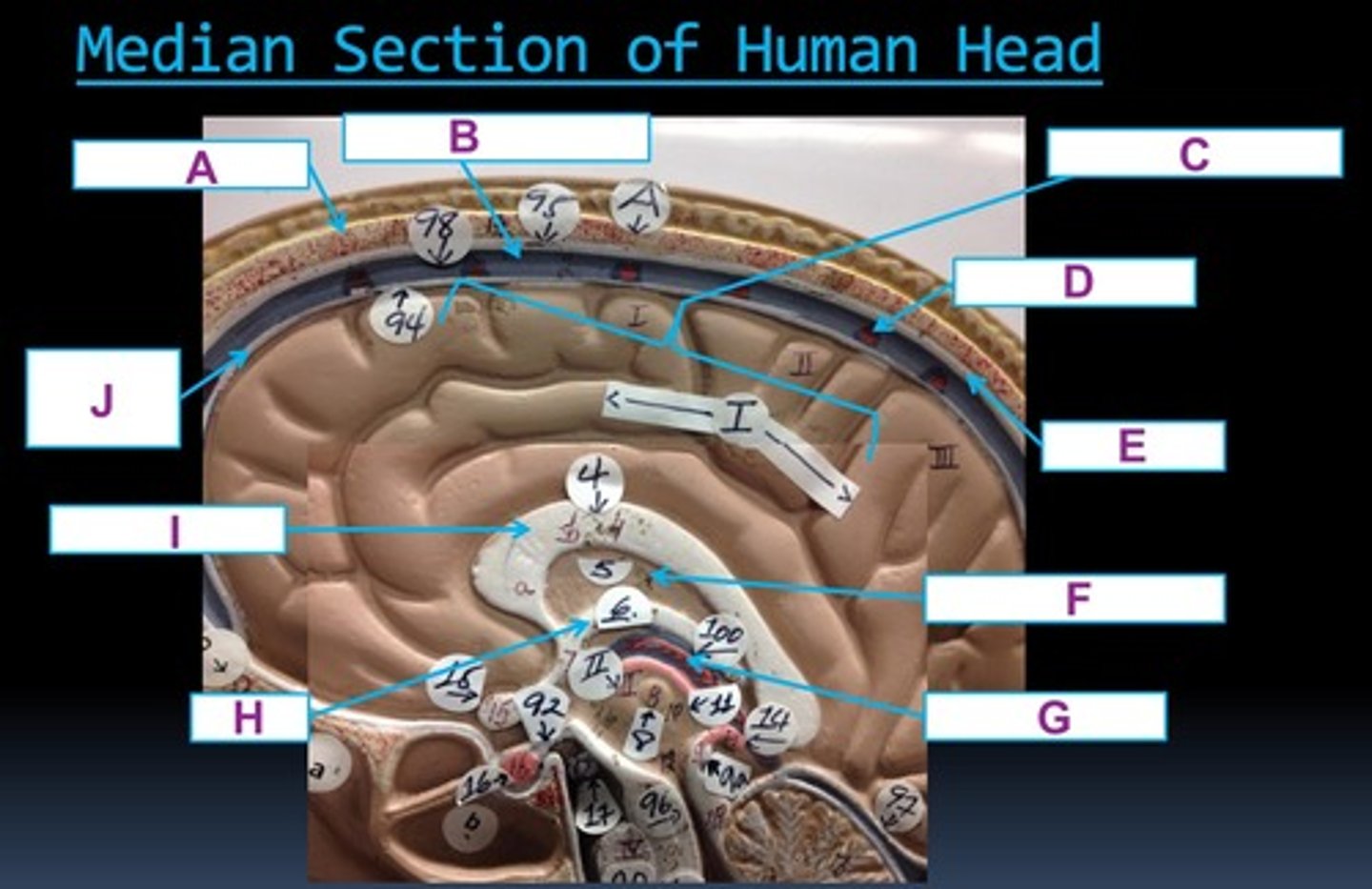
Cerebral Hemisphere: processes higher brain functions
1

Optic Chiasma: area where the medial portion of optic nerves cross
2

Infundibulum
3
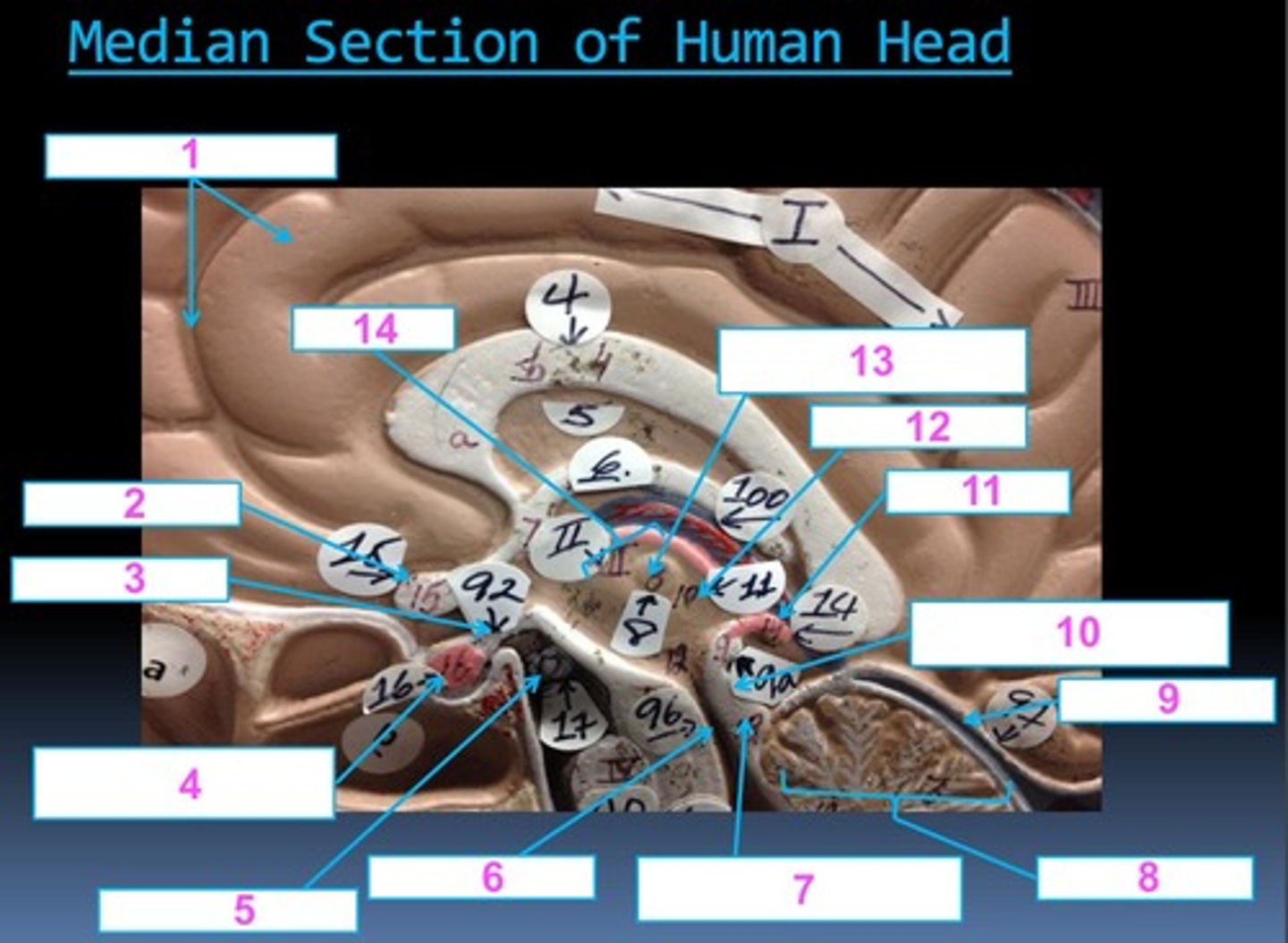
Pituitary Gland: produces hormones
4
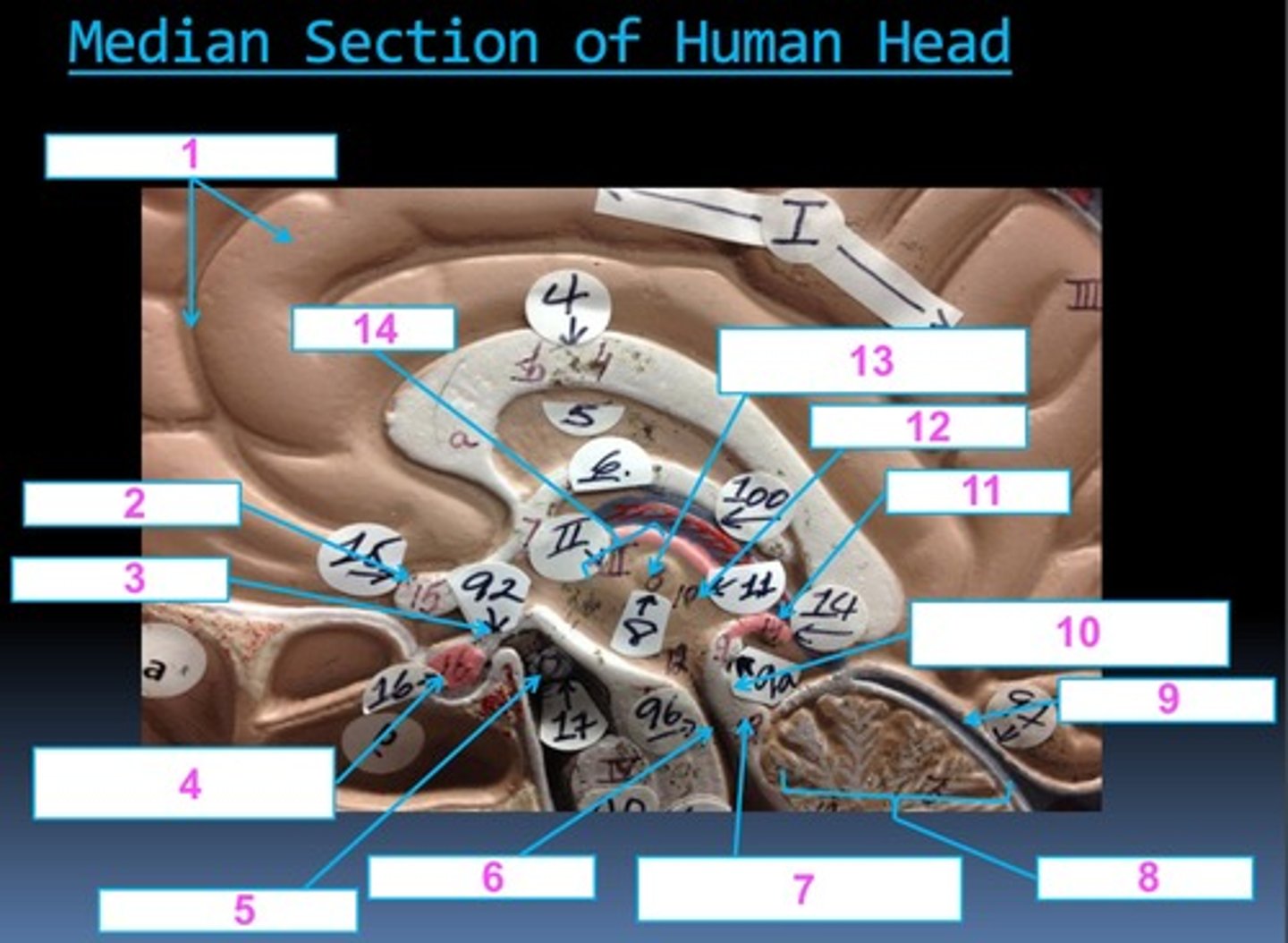
Mammillary Body: relay station for olfaction
5
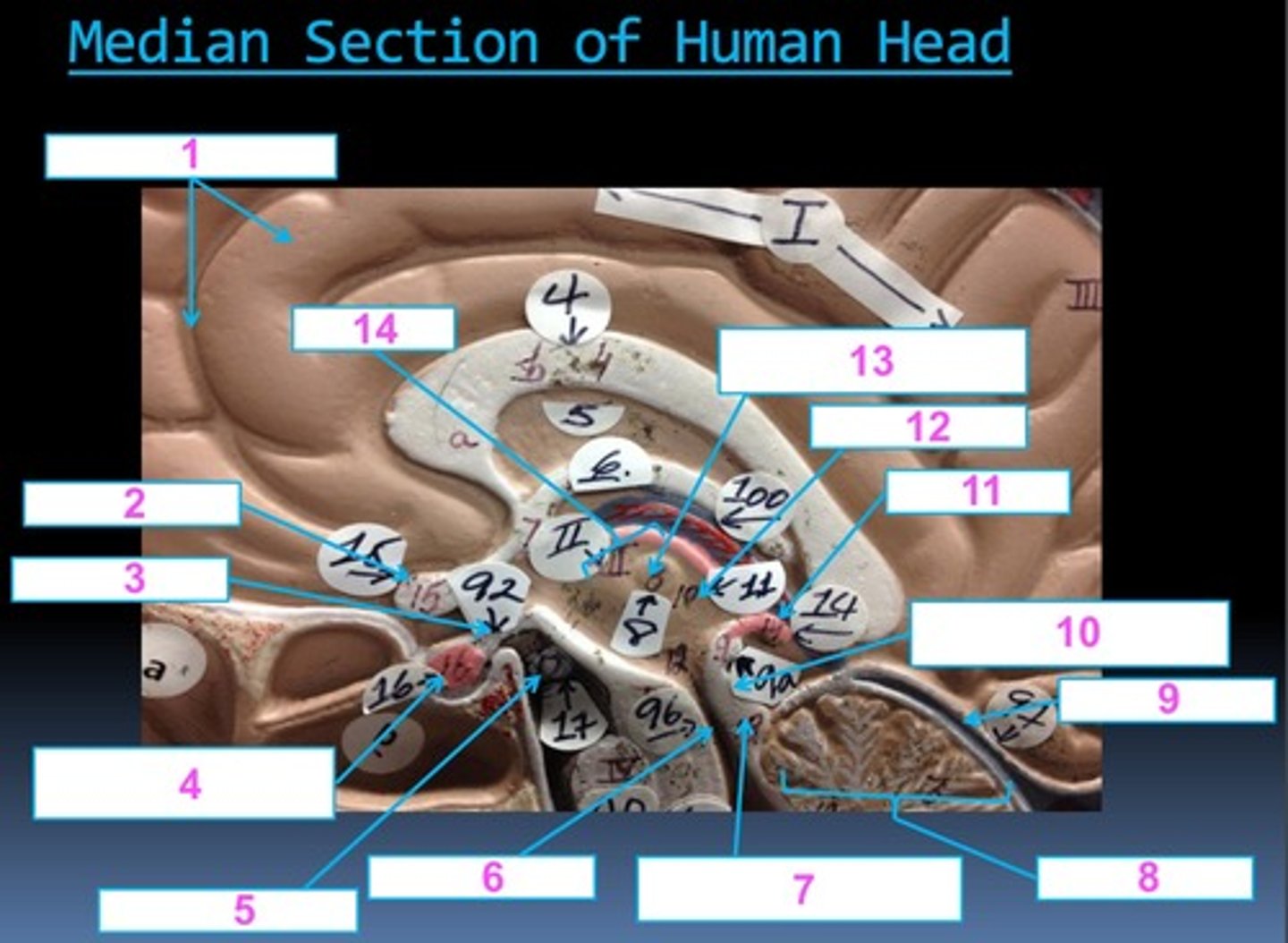
Cerebral Aqueduct: takes cerebrospinal fluid from the third to fourth ventricle
6
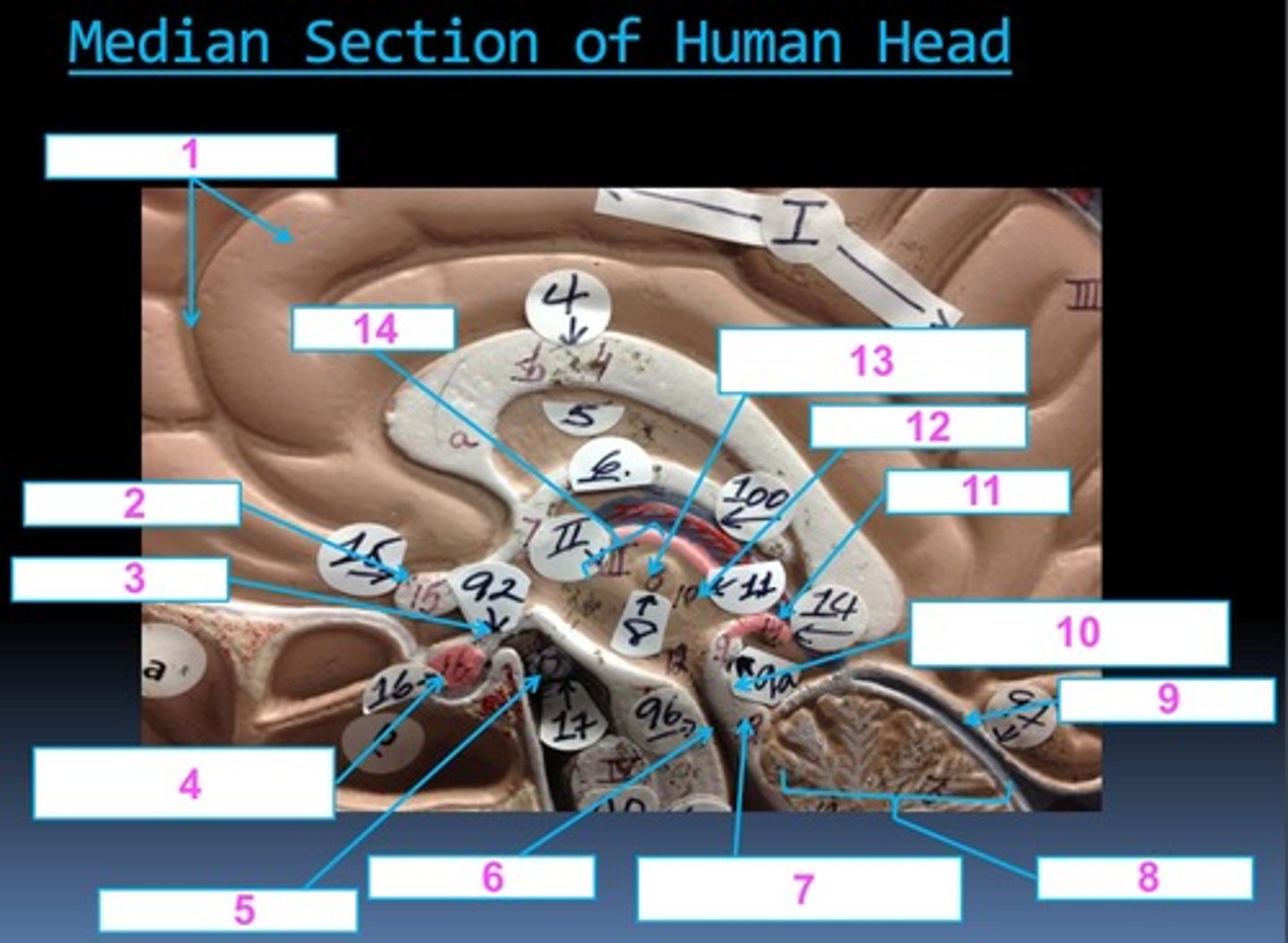
Inferior Colliculi of Corpora Quadrigemina: contains auditory reflex center
7
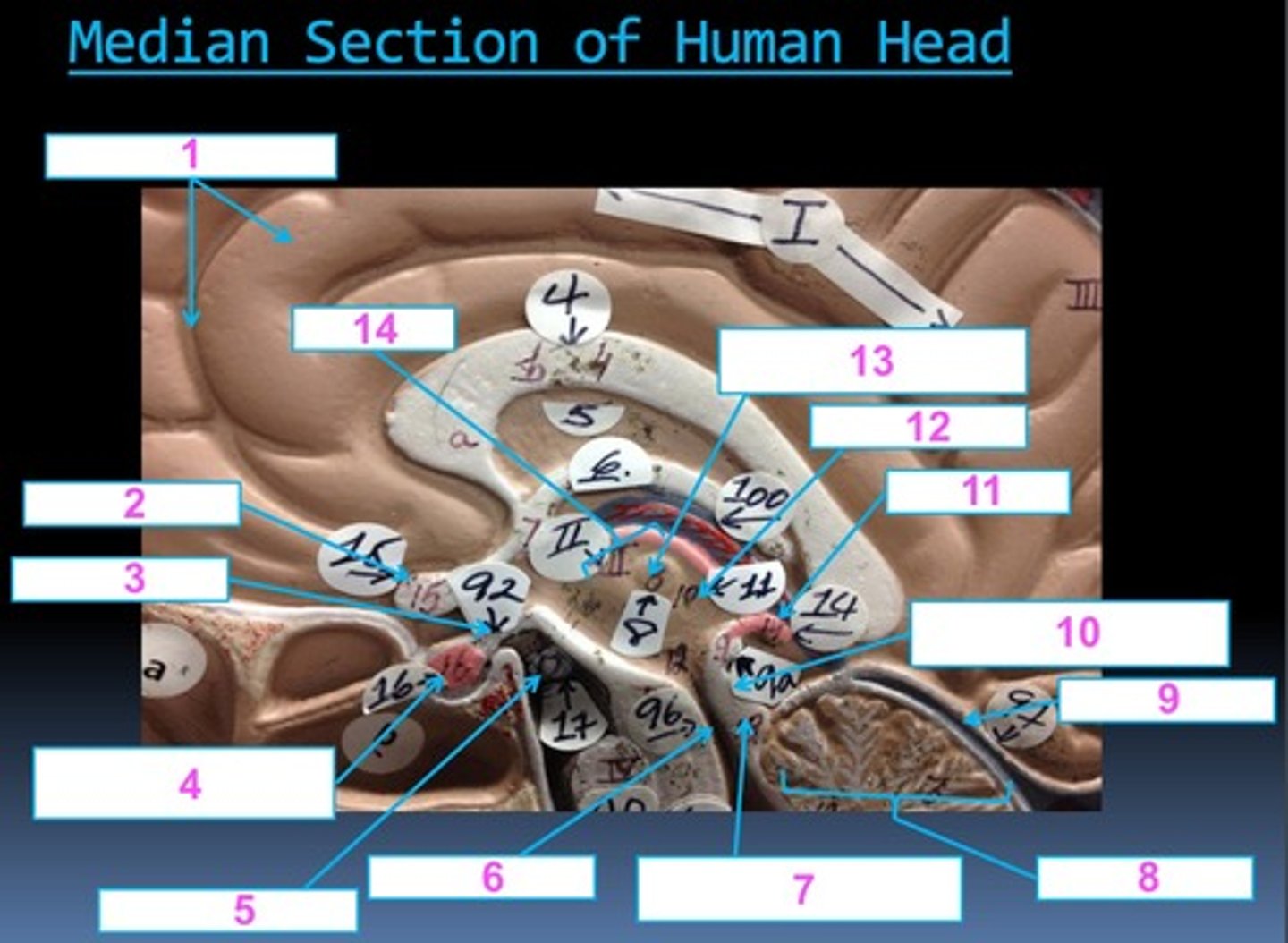
Cerebellum: controls balance/equilibrium
8
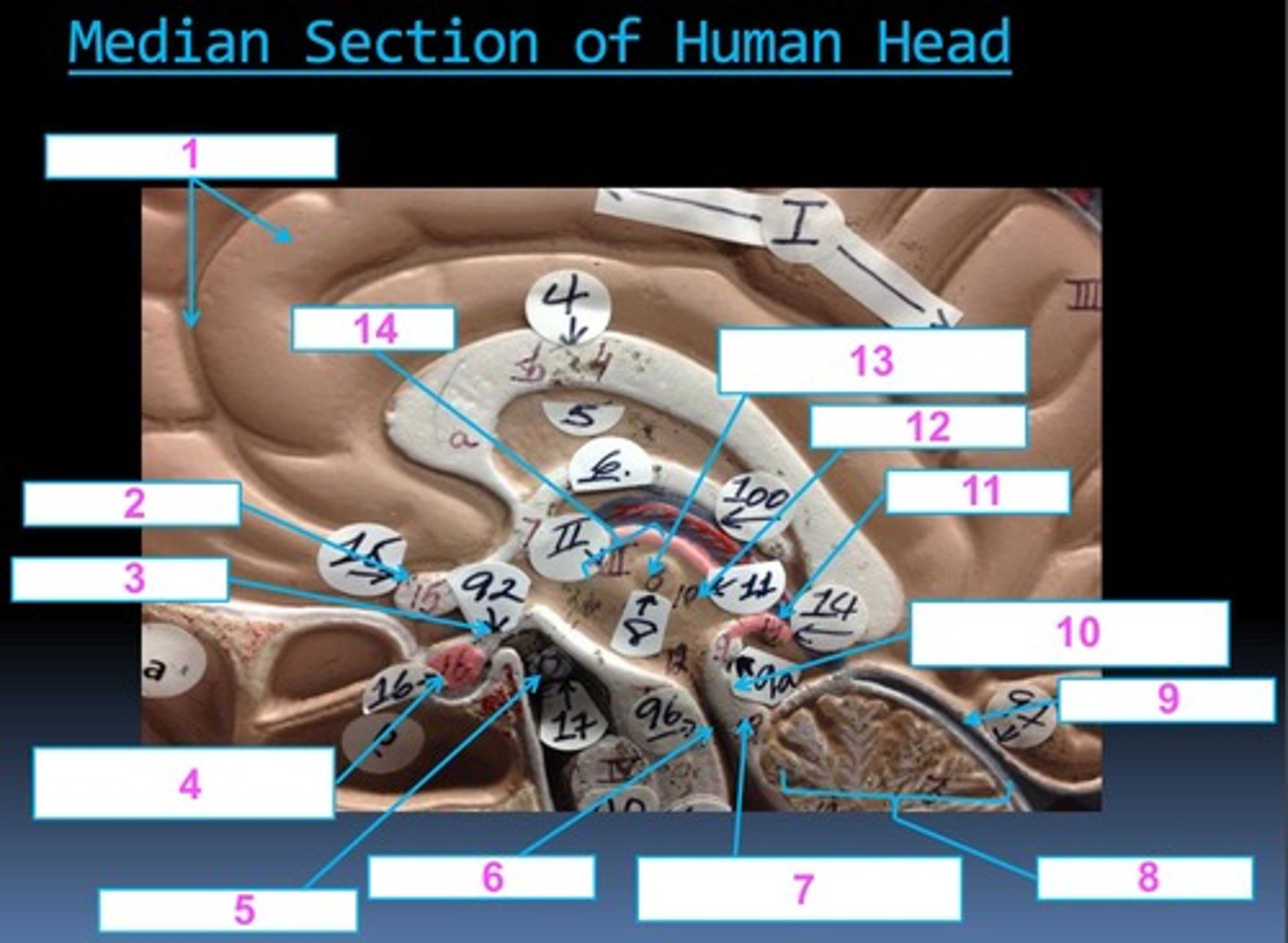
Straight Sinus: involved in CSF flow
9
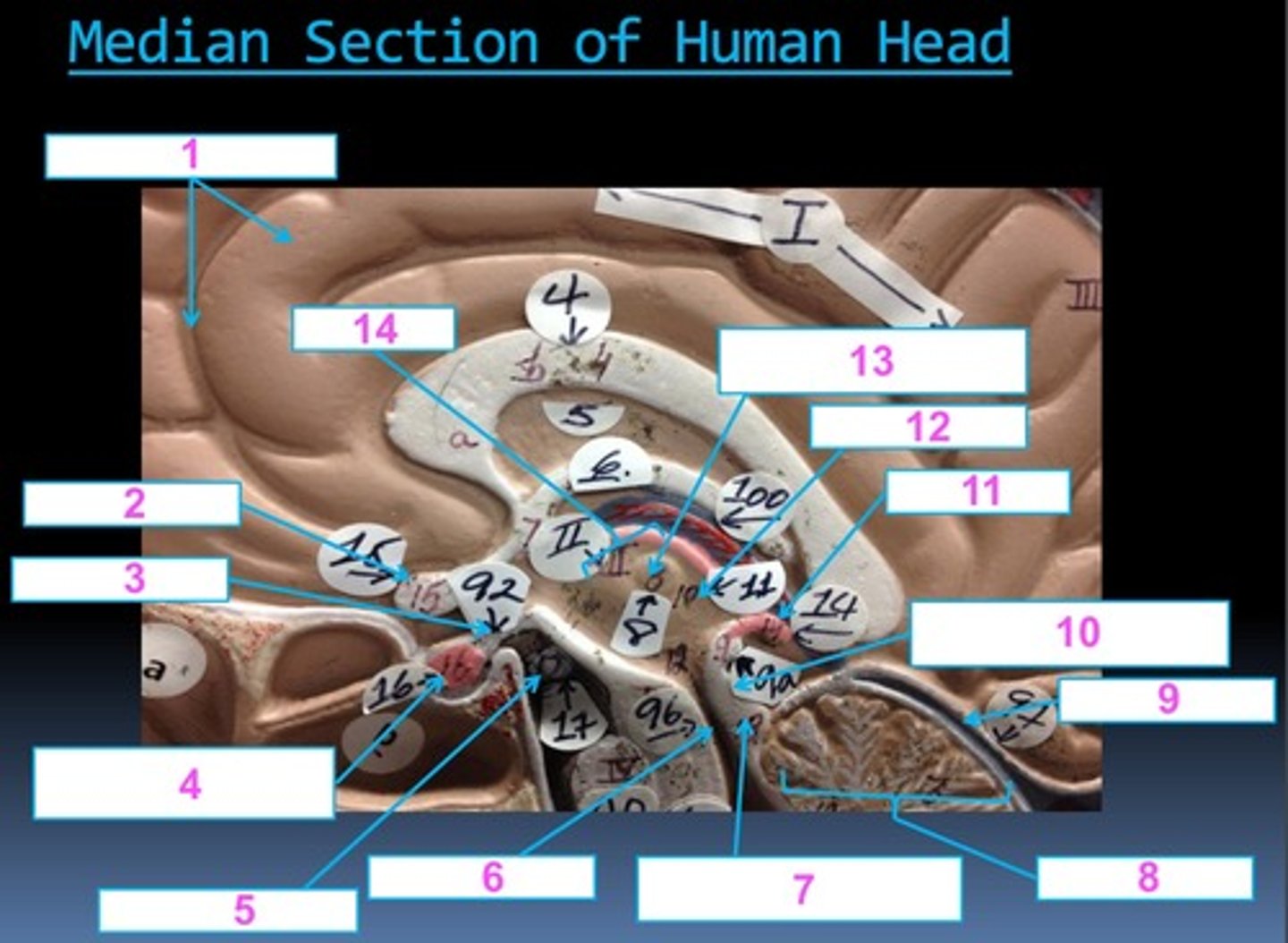
Superior Colliculi of Corpora Quadrigemina: contains visual reflex center/
10
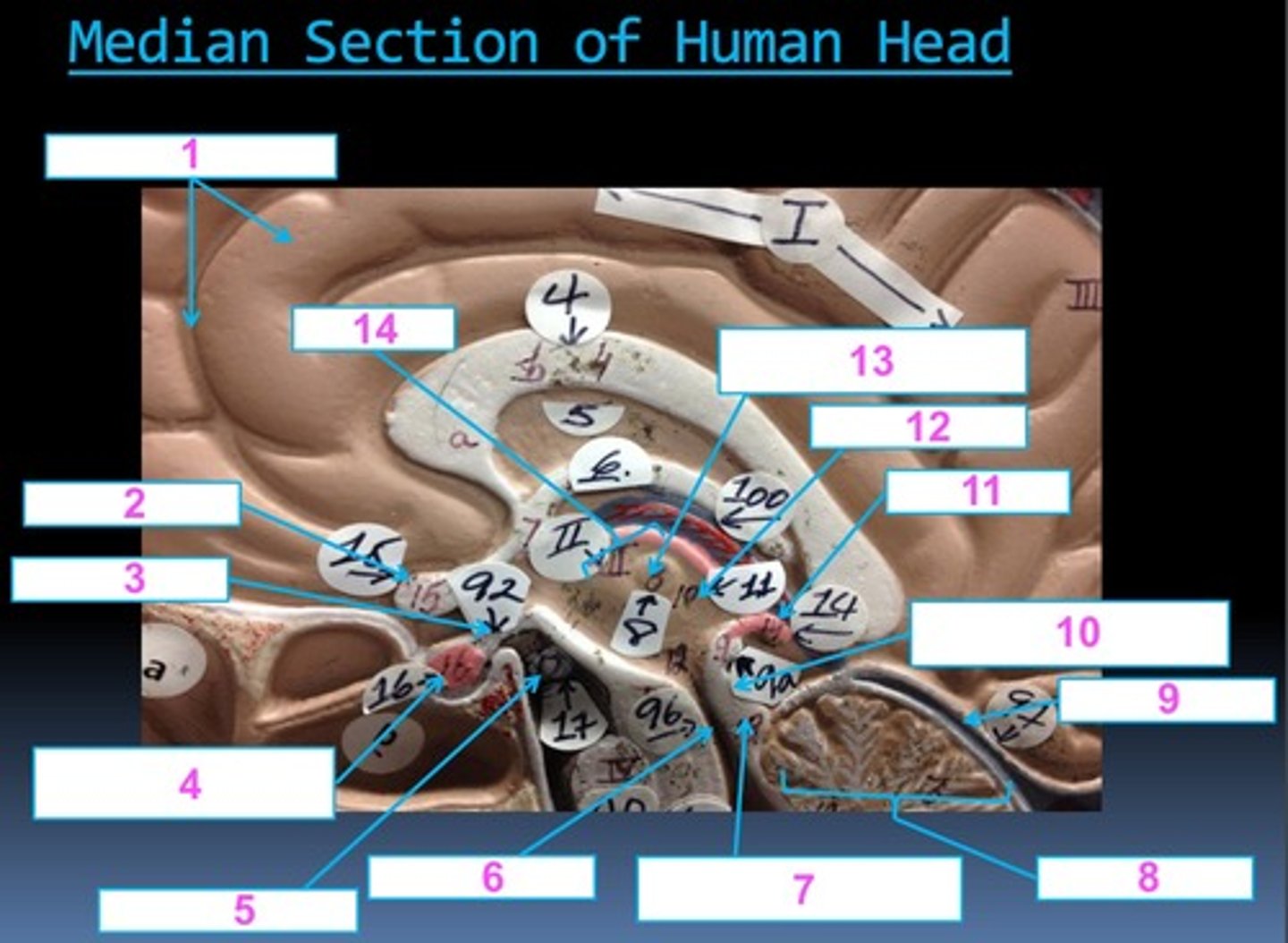
Pineal Body: produces hormones
11
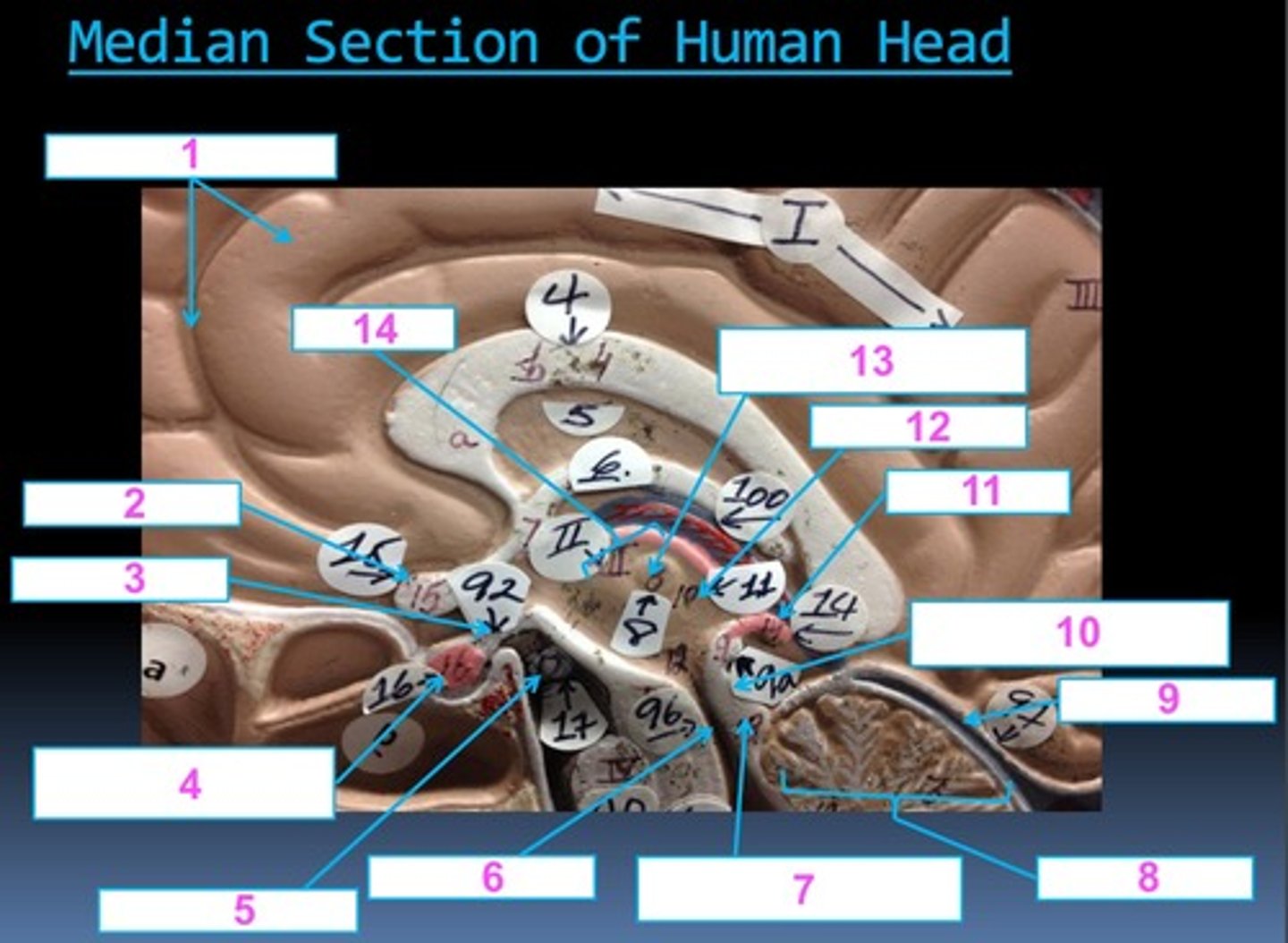
Third Ventricle: takes cerebrospinal fluid from the interventricular foramen to the cerebral aqueduct
12

Intermediate Mass of the Thalamus: connects the two thalamic lobes
13
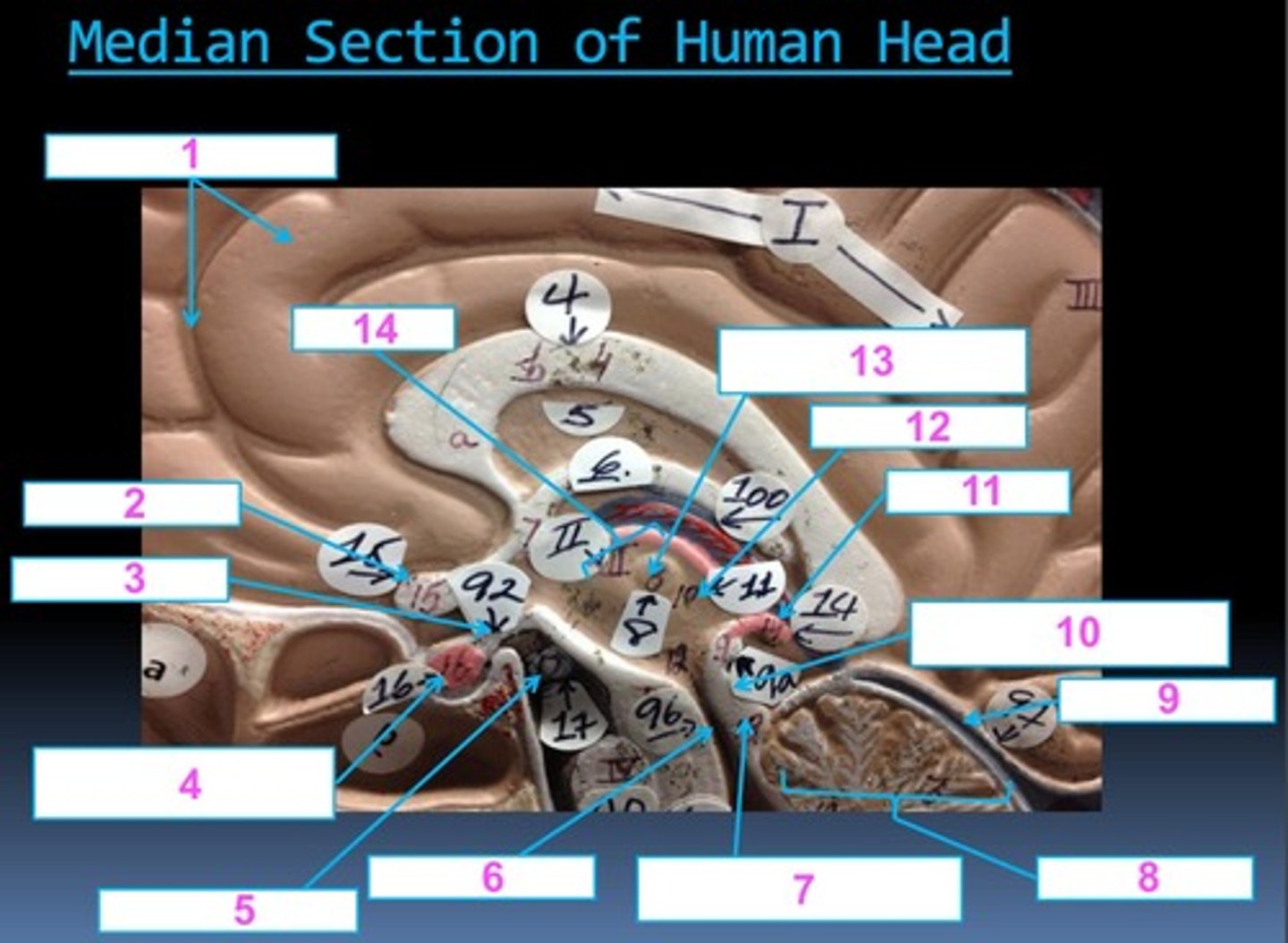
Thalamus: relay station from sensory impulses to localization/ interpretation areas
14
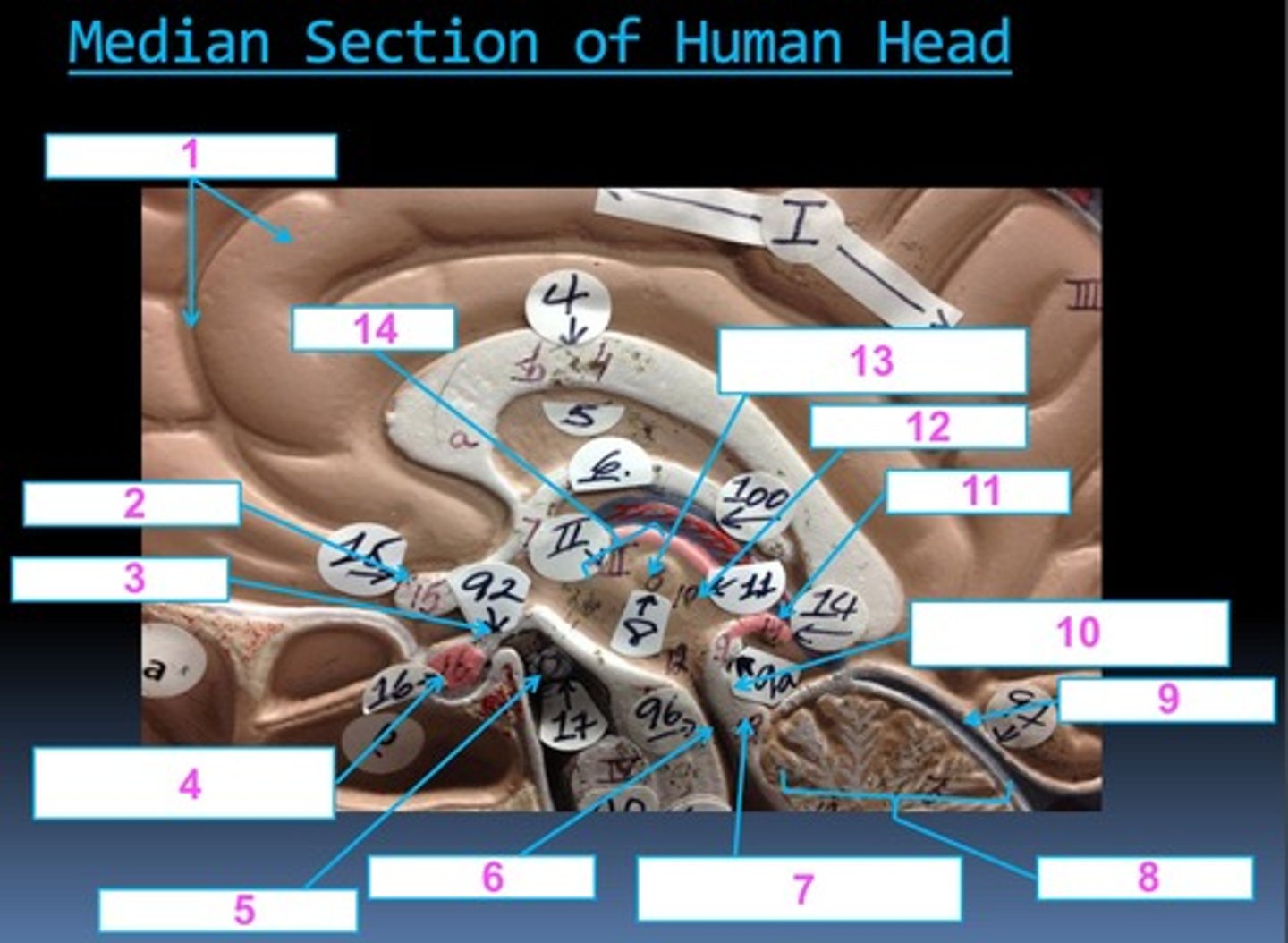
Cerebral Aqueduct: takes cerebrospinal fluid from the third to fourth ventricle
A

Pons: contains motor & sensory fiber tracts that connect brain w/ lower CNS centers
B
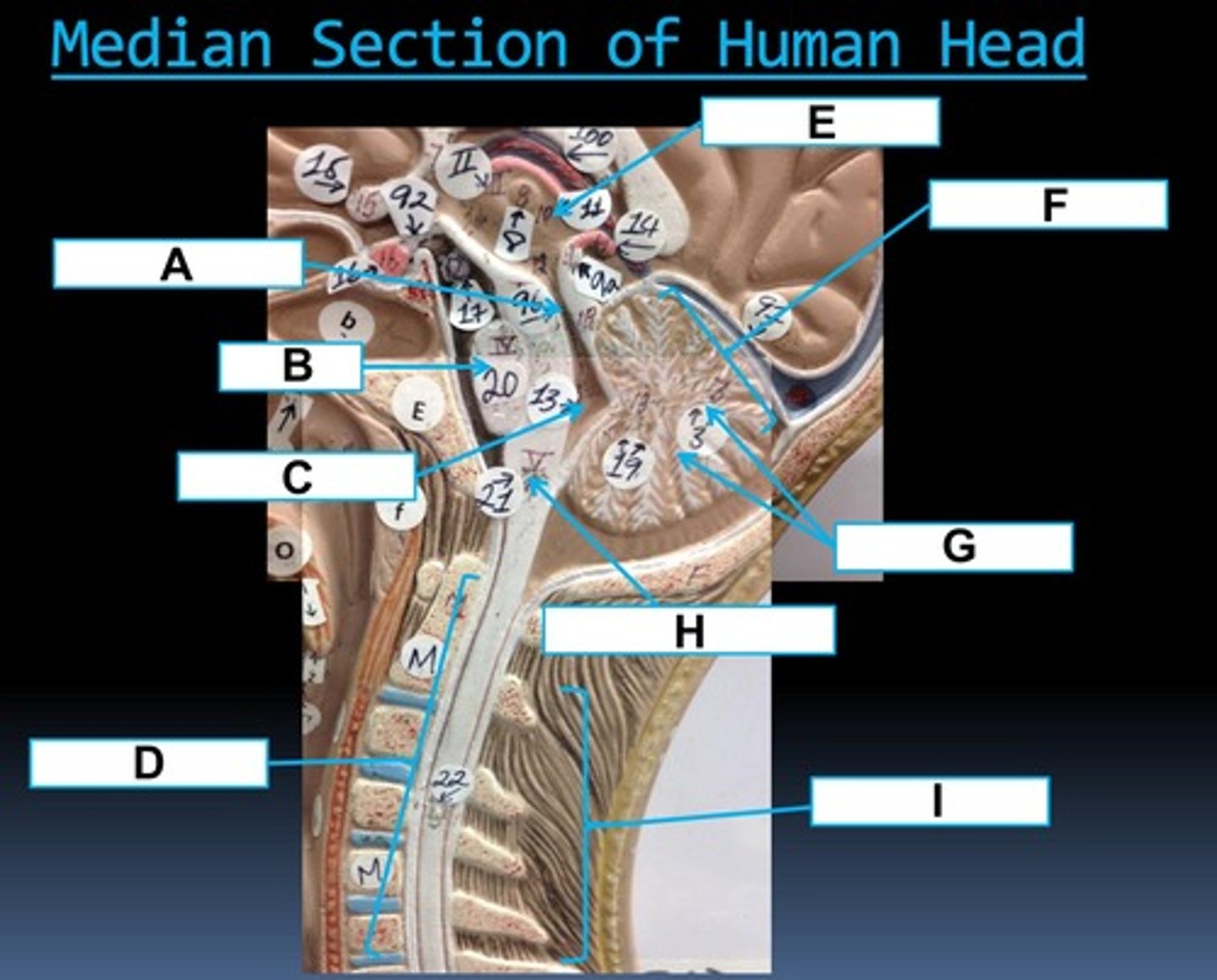
Fourth Ventricle: takes cerebrospinal fluid from the cerebral aqueduct to the central canal or foramina
C
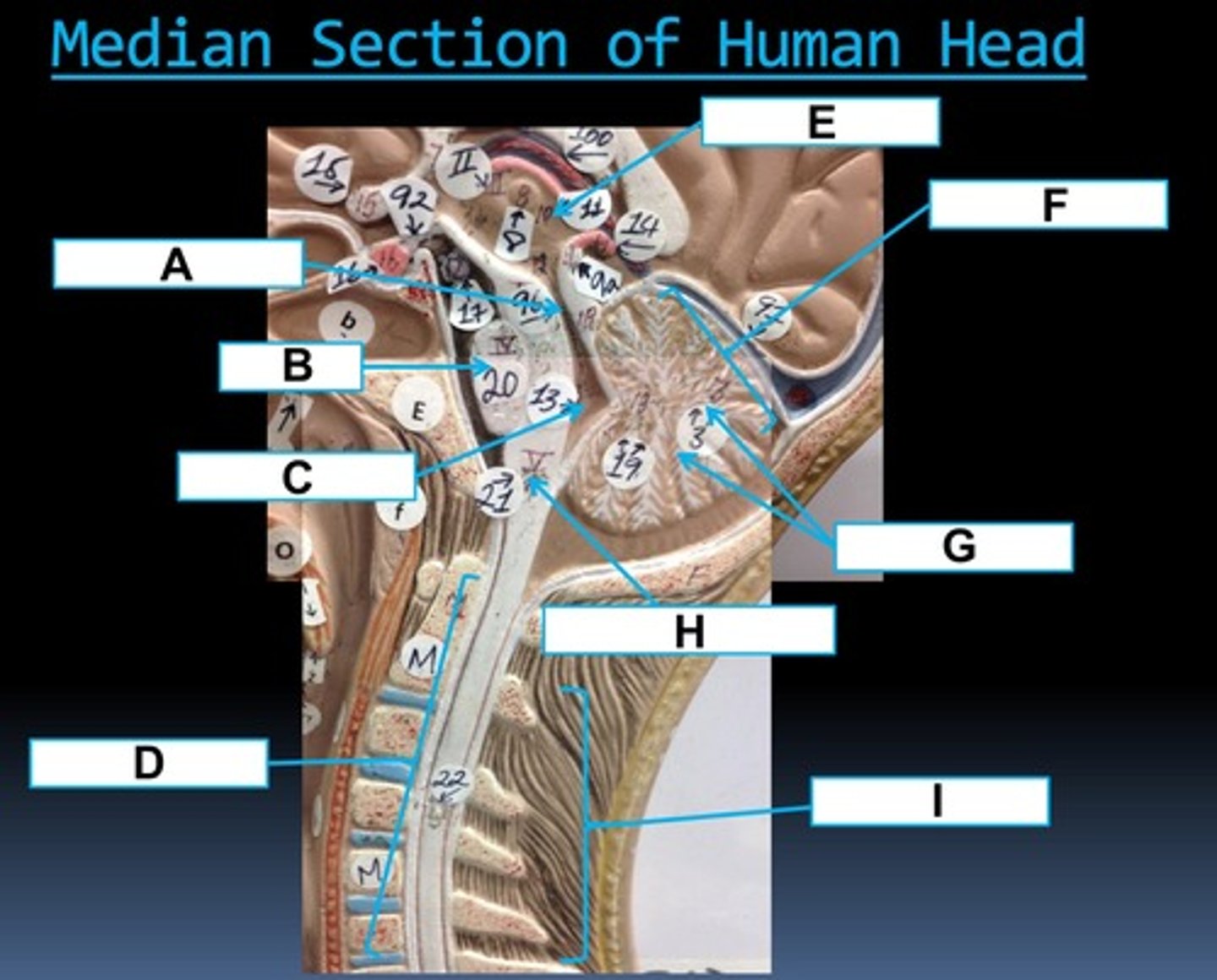
Spinal Cord: reflex, association, and communication area
D

Third Ventricle: takes cerebrospinal fluid from the interventricular foramen to the cerebral aqueduct
E
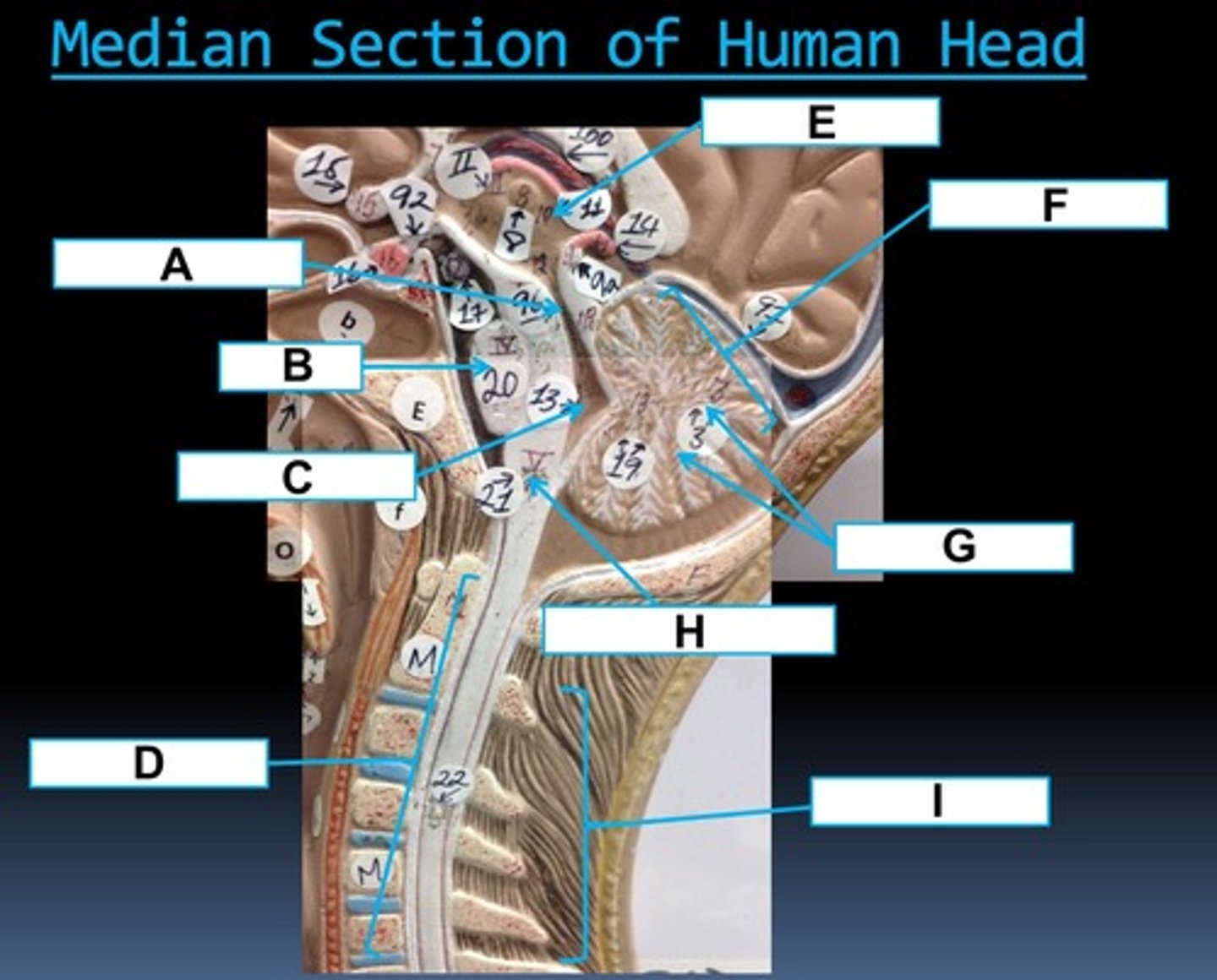
Cerebellum: controls balance/equilibrium
F
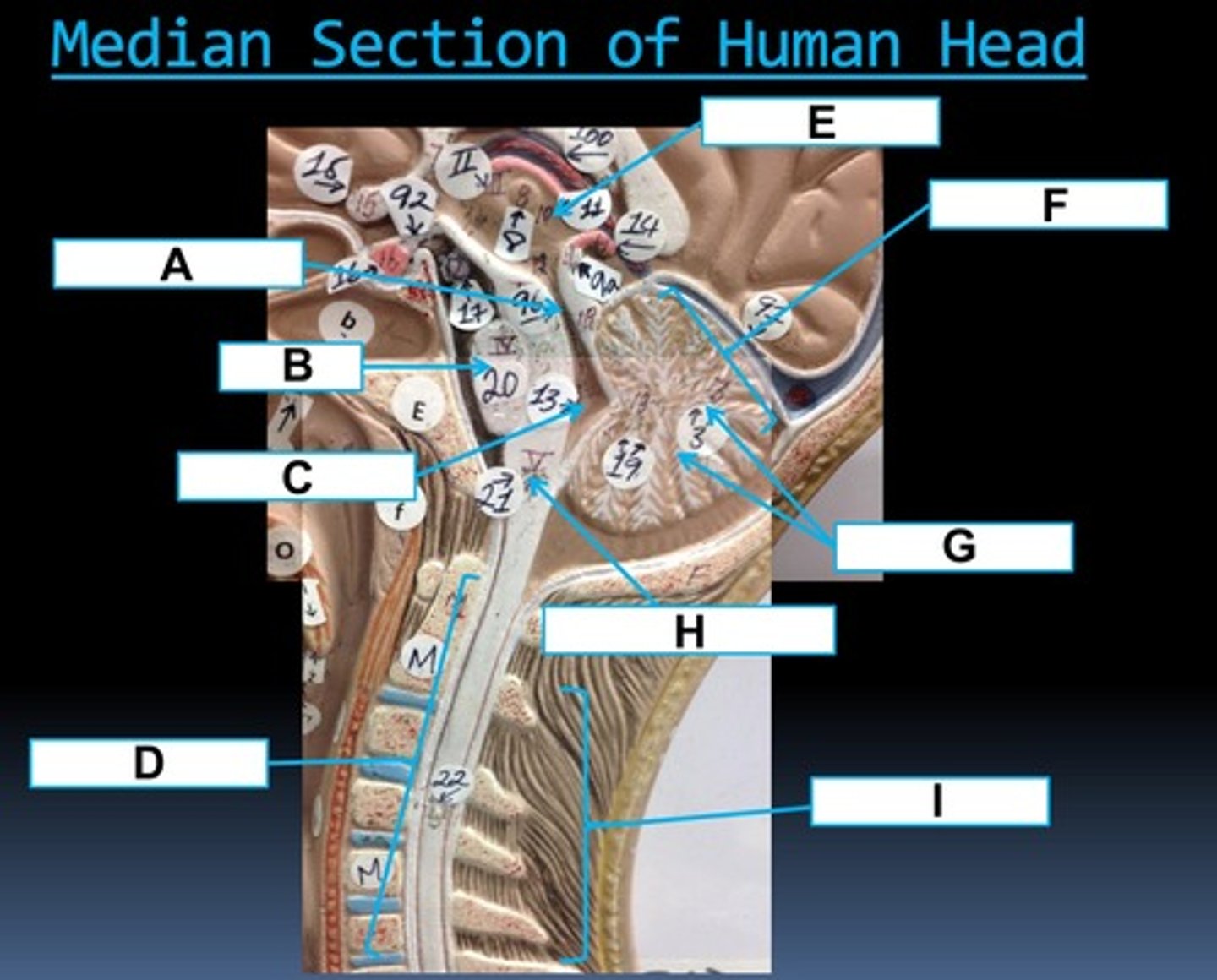
Arbor Vitae: propagates impulses from propioception
G
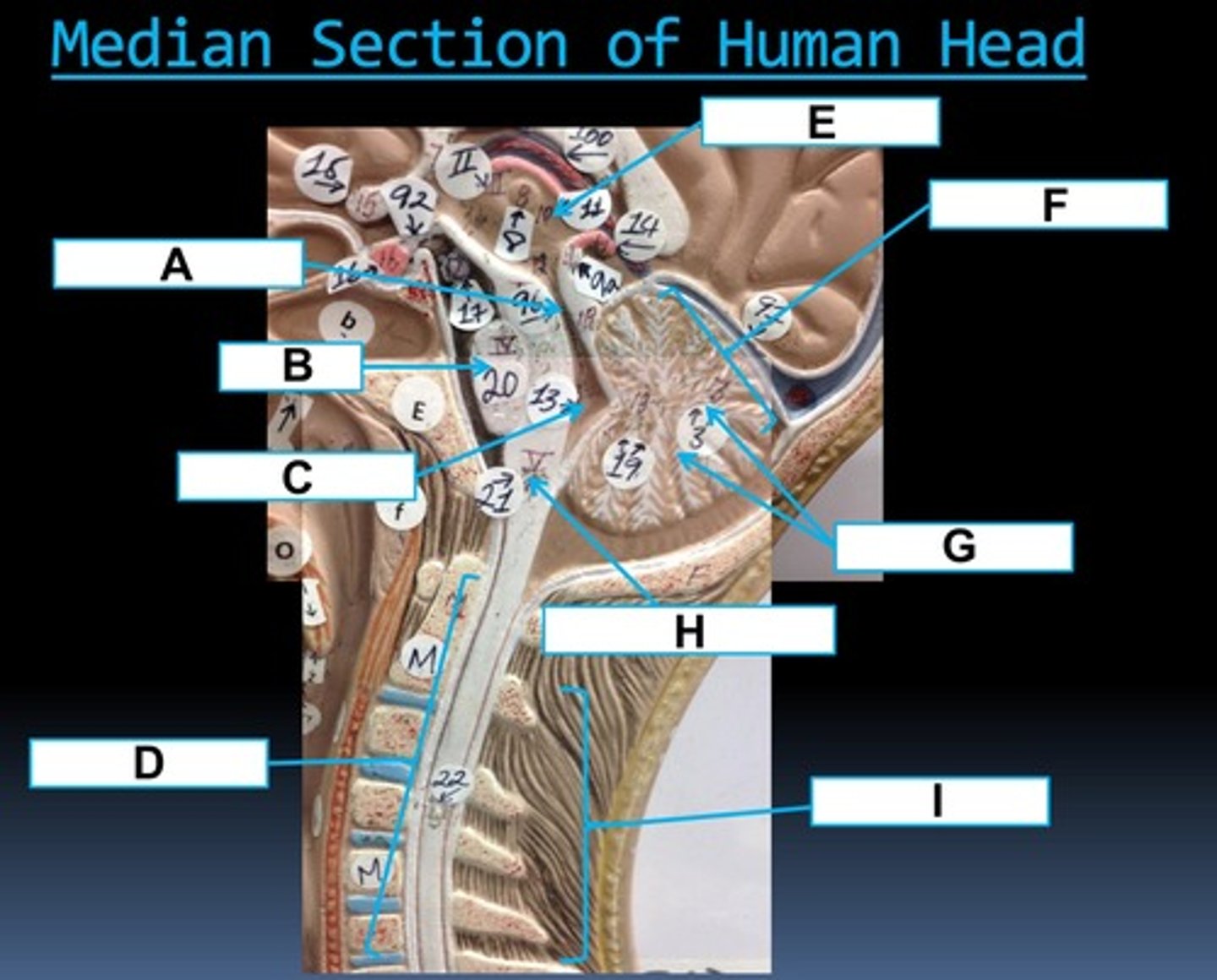
Medulla Oblongata: houses autonomic centers controlling heart rate
H
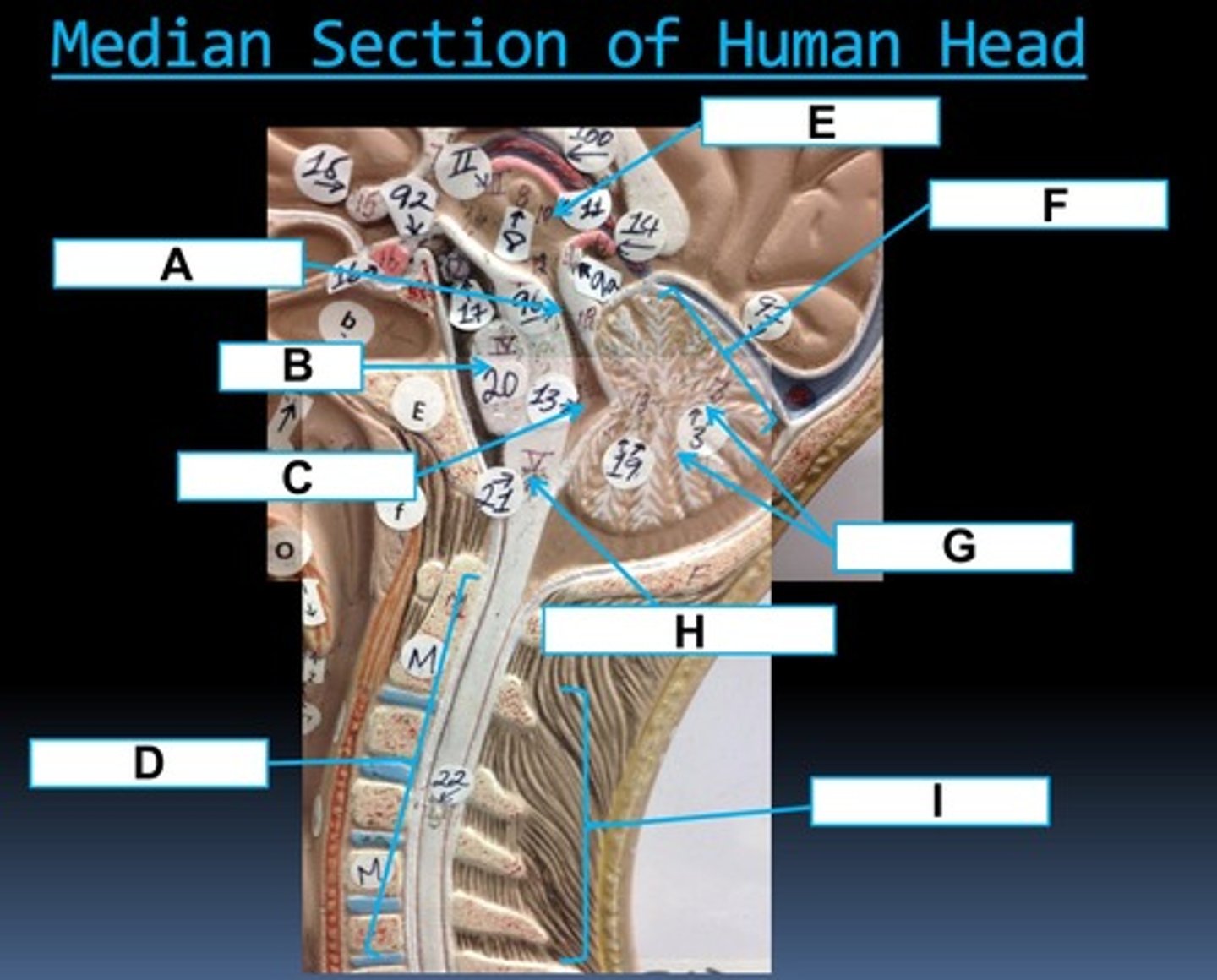
Spinal Column
I
